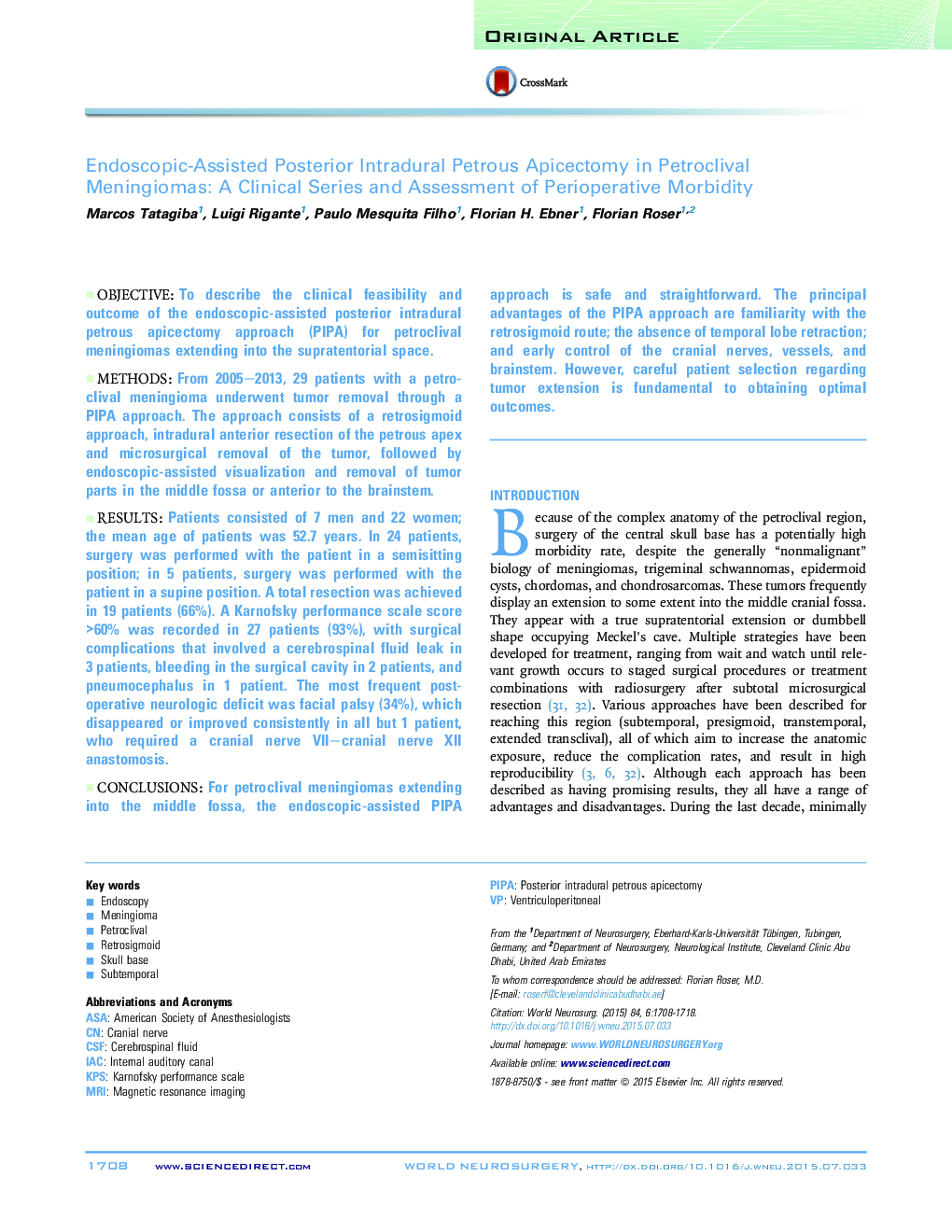| Article ID | Journal | Published Year | Pages | File Type |
|---|---|---|---|---|
| 6044484 | World Neurosurgery | 2015 | 11 Pages |
ObjectiveTo describe the clinical feasibility and outcome of the endoscopic-assisted posterior intradural petrous apicectomy approach (PIPA) for petroclival meningiomas extending into the supratentorial space.MethodsFrom 2005-2013, 29 patients with a petroclival meningioma underwent tumor removal through a PIPA approach. The approach consists of a retrosigmoid approach, intradural anterior resection of the petrous apex and microsurgical removal of the tumor, followed by endoscopic-assisted visualization and removal of tumor parts in the middle fossa or anterior to the brainstem.ResultsPatients consisted of 7 men and 22 women; the mean age of patients was 52.7 years. In 24 patients, surgery was performed with the patient in a semisitting position; in 5 patients, surgery was performed with the patient in a supine position. A total resection was achieved in 19 patients (66%). A Karnofsky performance scale score >60% was recorded in 27 patients (93%), with surgical complications that involved a cerebrospinal fluid leak in 3Â patients, bleeding in the surgical cavity in 2 patients, and pneumocephalus in 1 patient. The most frequent postoperative neurologic deficit was facial palsy (34%), which disappeared or improved consistently in all but 1 patient, who required a cranial nerve VII-cranial nerve XII anastomosis.ConclusionsFor petroclival meningiomas extending into the middle fossa, the endoscopic-assisted PIPA approach is safe and straightforward. The principal advantages of the PIPA approach are familiarity with the retrosigmoid route; the absence of temporal lobe retraction; and early control of the cranial nerves, vessels, and brainstem. However, careful patient selection regarding tumor extension is fundamental to obtaining optimal outcomes.
